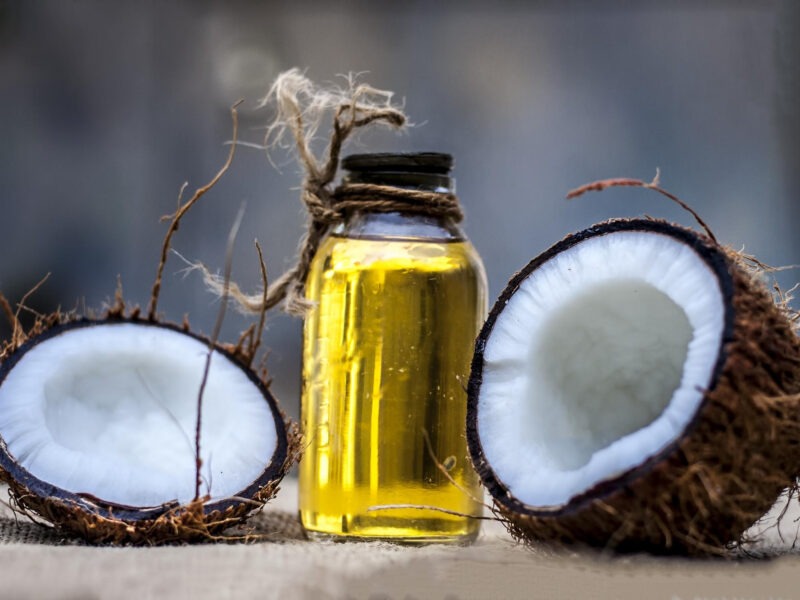User Generated Content (UGC) campaigns are a modern marketing strategy that leverages content created by a brand’s audience to promote a product, service, or brand itself. Unlike traditional advertising, UGC campaigns encourage customers to share their own experiences and perspectives through various mediums such as videos, images, reviews, and social media posts. This approach not only helps in building authenticity and trust among potential customers but also increases engagement and fosters a community around the brand. By featuring real stories and testimonials, UGC campaigns can lead to more organic reach and can be a cost-effective way to generate buzz and validate a brand’s value proposition.
10 Examples of Excellent User Generated Campaigns
1. Sephora
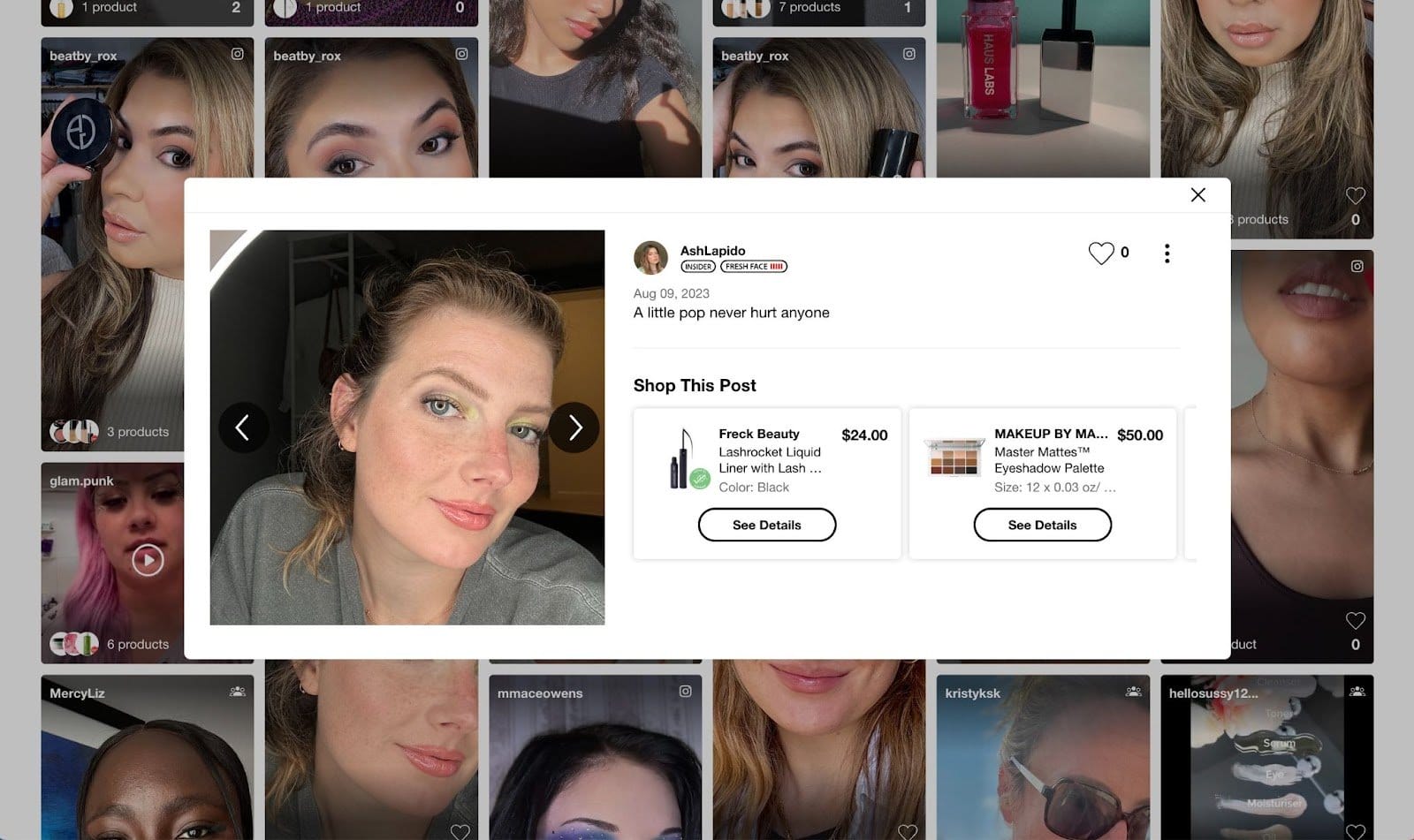
Additionally, UGC is made shoppable, allowing site visitors to easily explore and purchase products featured in community member pictures. The gallery is dynamic, updating automatically as new UGC is approved, showcasing Sephora’s commitment to customer engagement and enhancing the product discovery and conversion process.
2. Farrow & Ball
Farrow & Ball, the manufacturer known for its bold wallpapers and paints, has crafted a User Generated Content (UGC) campaign that involves the brand’s blog posts, product pages, and other site pages featuring UGC. This approach celebrates the brand’s community, providing inspiration for both up-and-coming interior designers and everyday shoppers.
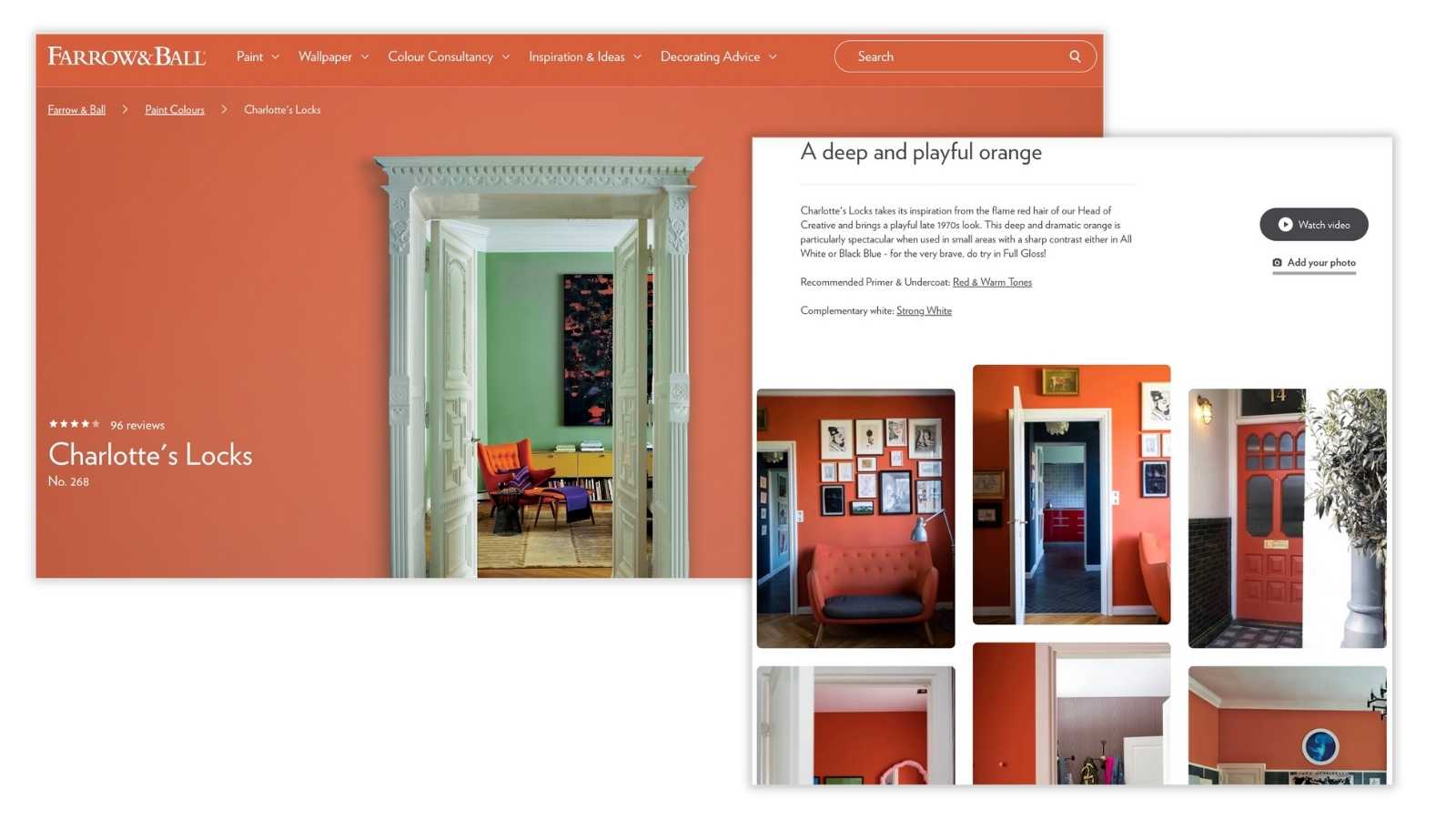
They also offer a dedicated community gallery on their website where visitors can filter UGC by color, room, style, and product type. On Instagram, where they have an engaged community of 1.6 million followers, UGC comprises the majority of their posts, highlighting the active participation of their customer base in the brand’s visual storytelling.
3. The Cosmopolitan of Las Vegas
The Cosmopolitan of Las Vegas is recognized as one of the most Instagrammed hotels globally. Its UGC campaign capitalizes on this by showcasing guests’ photos across its category pages, which include diverse offerings from restaurant experiences to casino moments.
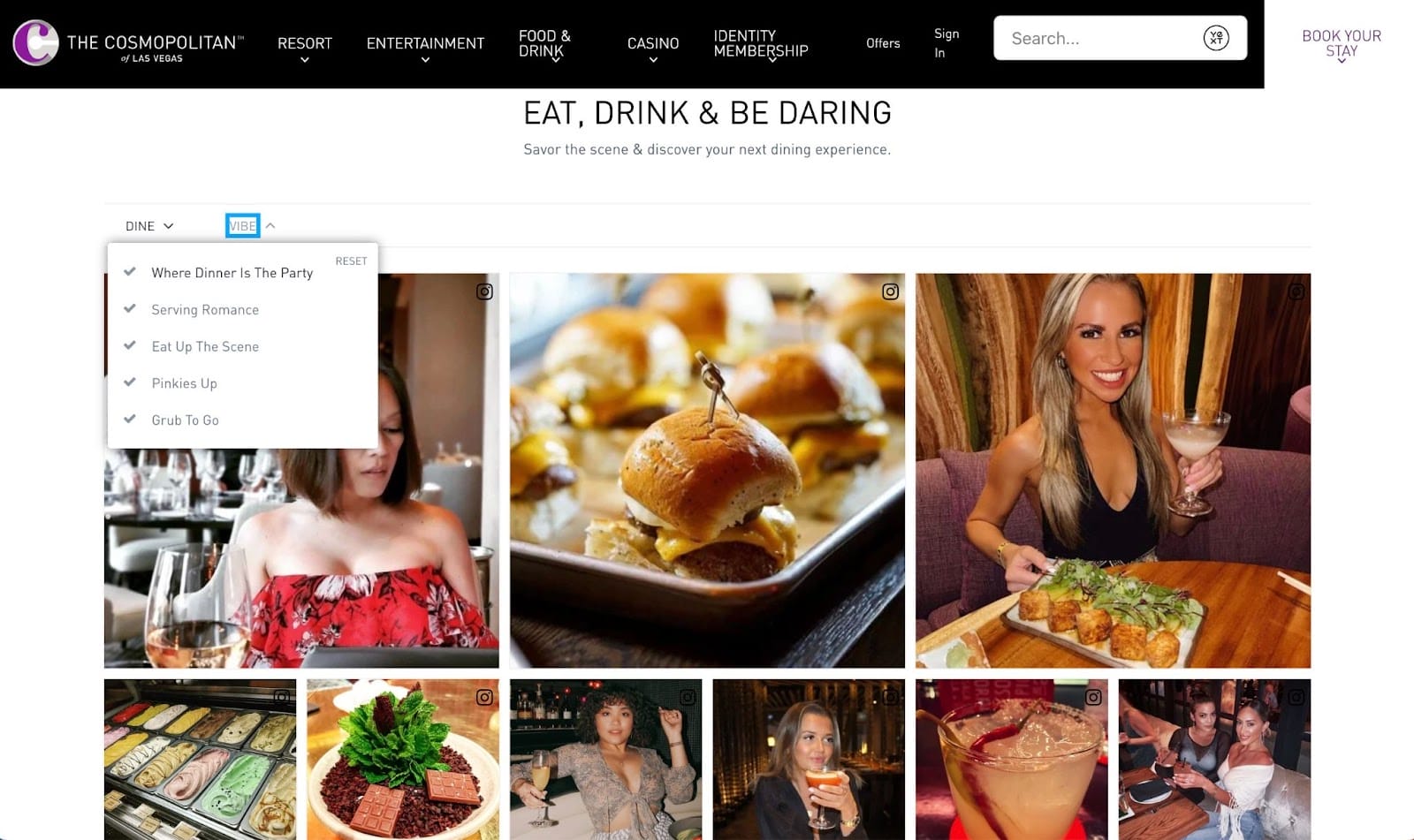
The hotel effectively combines influencer content with UGC on its Instagram account, resulting in over 250 million impressions. This strategy not only engages their followers but also significantly contributes to the hotel’s site traffic, demonstrating the power of UGC in enhancing brand visibility and customer engagement.
4. Article
Article has ingeniously turned to User Generated Content (UGC) to bridge the gap between online shopping and the tangible experience of a showroom. By showcasing authentic customer images that display how various buyers have styled Article’s Scandinavian-inspired modern furniture in their own homes, the brand offers a real-world visual of its products in use.
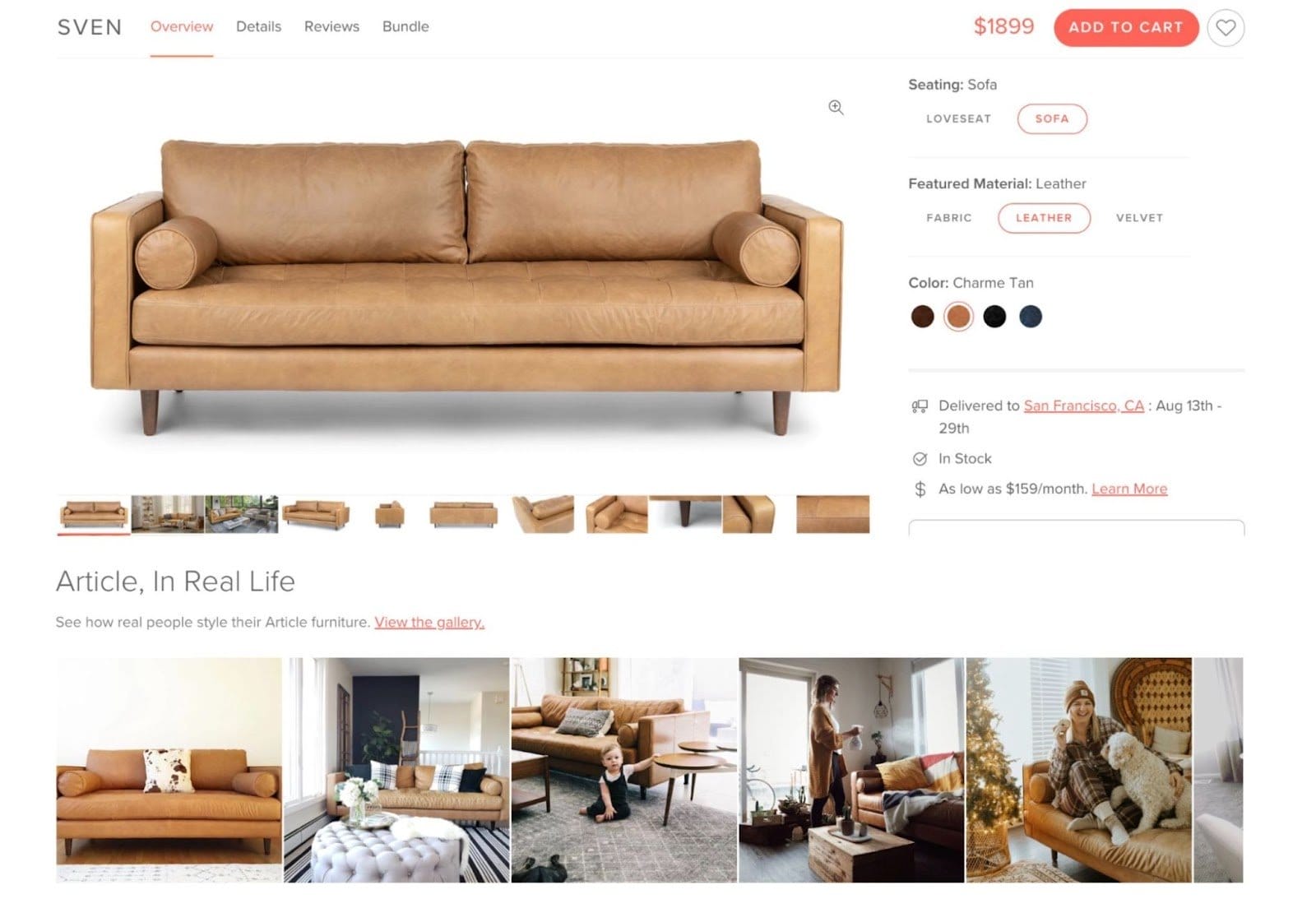
These visuals are not just eye-catching but functional, as they are integrated into the product pages, offering furniture pairing suggestions that keep potential buyers engaged, reduce bounce rates, and facilitate the shopping experience with a shoppable inspiration gallery. This strategy taps into the power of customer advocacy, leveraging the aesthetic appeal of their designs in everyday settings to attract and reassure new customers.
5. Vitamix
Vitamix engages with its culinary-minded customer base through a creative UGC initiative that extends beyond simple recipe sharing on Instagram. Their “Smoothie of the Year” contest taps into the current wellness and visual culture by inviting fans to vote for their favorite smoothies under two categories: nutrient-packed “nourish” smoothies or visually stunning “flourish” smoothies.
By pitting these two categories against each other and having them led by nutrition influencers, Vitamix not only promotes healthy lifestyles but also the aesthetic appeal of their products. The contest’s landing page features UGC carousels highlighting the nourish and flourish entries, effectively using customer creativity to market their blenders and food processors.
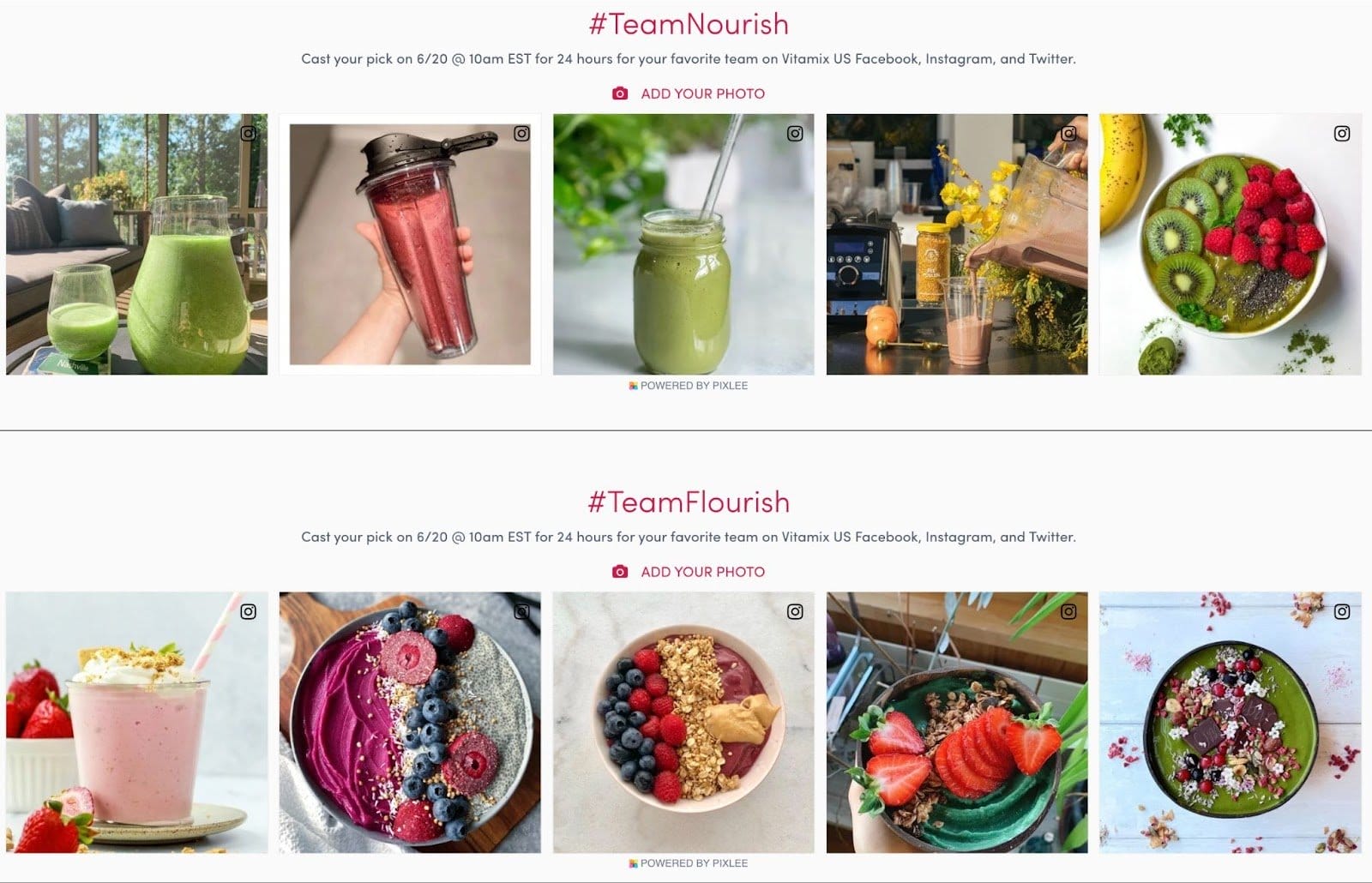
By pitting these two categories against each other and having them led by nutrition influencers, Vitamix not only promotes healthy lifestyles but also the aesthetic appeal of their products. The contest’s landing page features UGC carousels highlighting the nourish and flourish entries, effectively using customer creativity to market their blenders and food processors.
6. Crocs
Crocs, renowned for its distinctive footwear, has embraced the power of community through its User Generated Content (UGC) campaigns, like the #MyCrocsEra hashtag initiative. By encouraging customers to share how they personalize their Crocs with Jibbitz charms on social media, the brand not only celebrates its diverse consumer base but also fosters a sense of belonging and creativity.
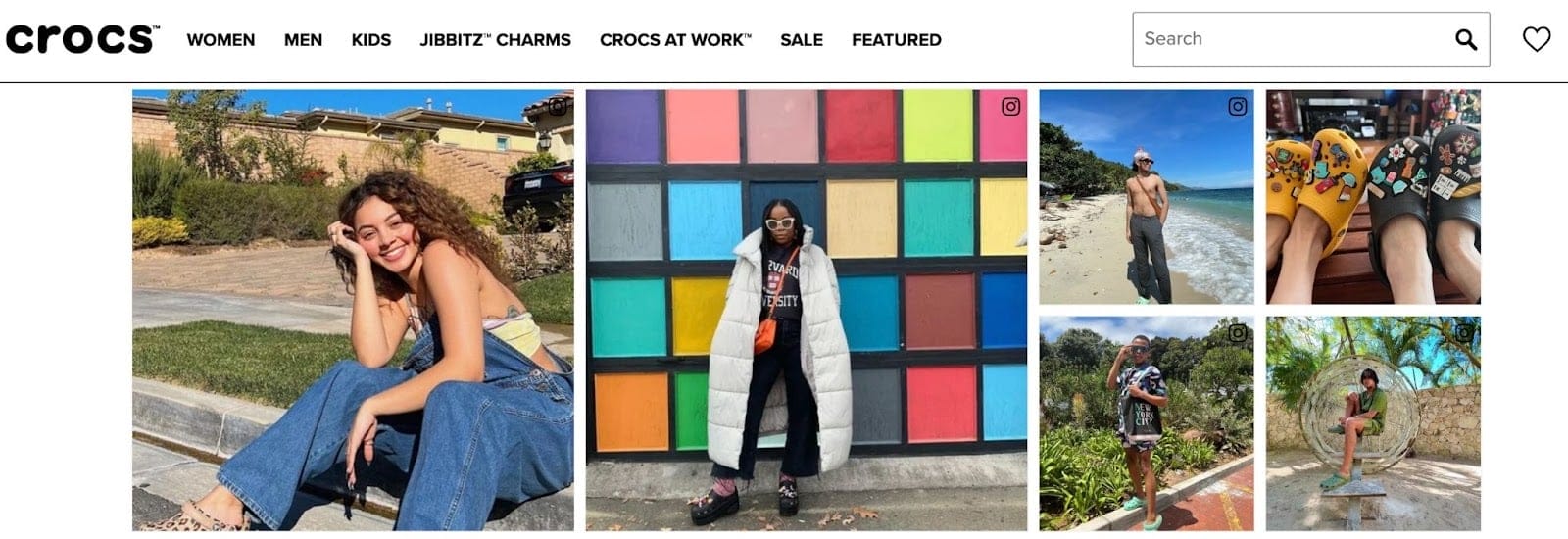
This strategy enhances customer loyalty and confidence in purchases, as prospective buyers see real-life examples of Crocs worn in a variety of styles and settings, reinforcing the brand’s reputation as versatile and universally appealing.
7. Revel Nail
Revel Nail has adeptly harnessed the allure of User Generated Content (UGC) to boost their conversion rates and reduce page abandonment. They infuse their marketing with vibrancy by showcasing customer-created photos and videos across multiple digital platforms, including product pages, social media, and a dedicated on-site photo gallery. Further amplifying engagement, Revel Nail incorporates shoppable TikTok videos where customers exhibit their own nail art using Revel Nail’s products. This strategy not only demonstrates the practical use of their products but also highlights the fun and creativity that customers can have, thereby encouraging more interactions and purchases.
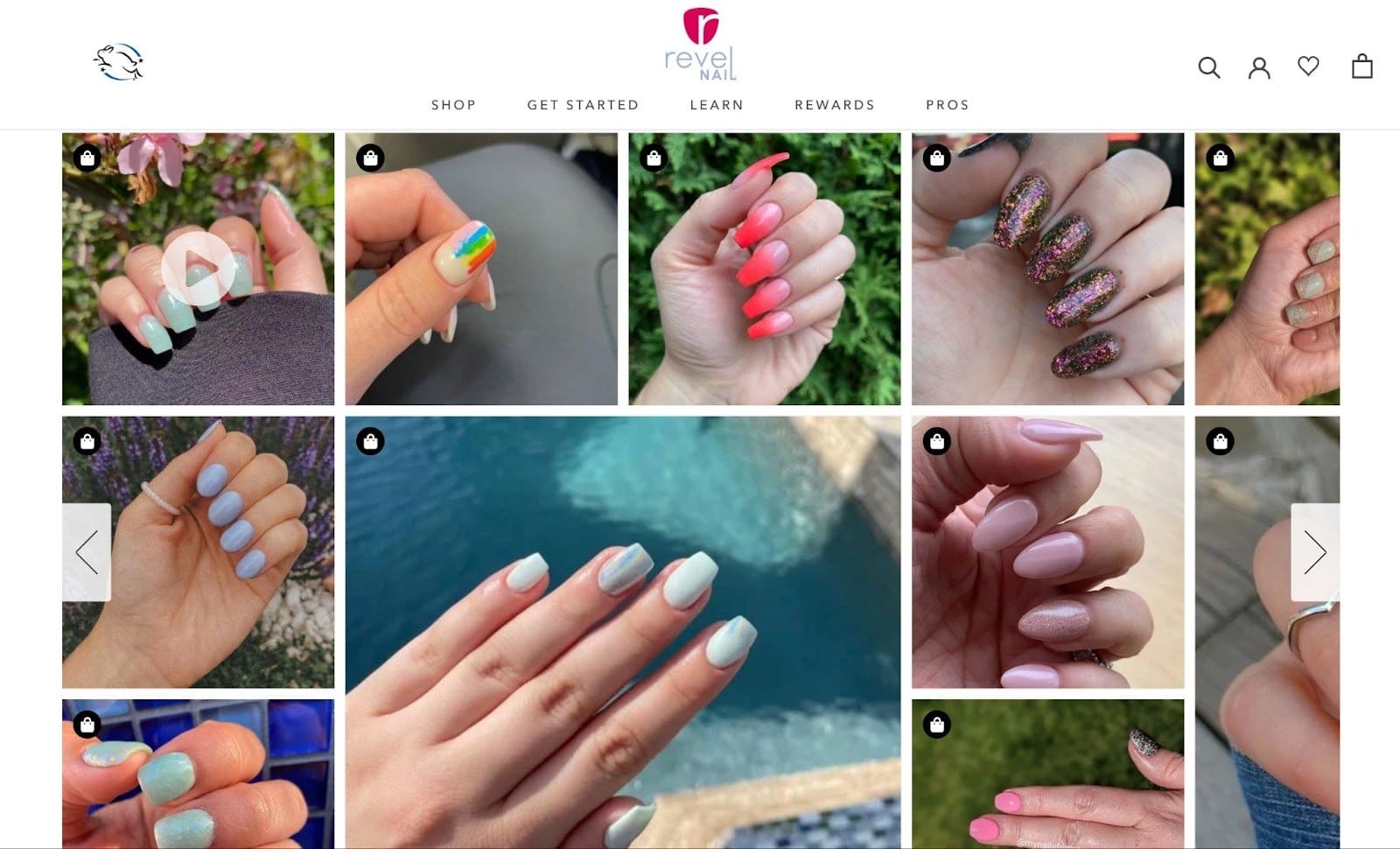
Further amplifying engagement, Revel Nail incorporates shoppable TikTok videos where customers exhibit their own nail art using Revel Nail’s products. This strategy not only demonstrates the practical use of their products but also highlights the fun and creativity that customers can have, thereby encouraging more interactions and purchases.
8. Jones Soda
Jones Soda’s innovative approach to User Generated Content (UGC) deeply integrates customer participation into its product packaging. The brand invites its fans to submit personal photos through Instagram or direct upload for a chance to have their image emblazoned on soda bottle labels, with site visitors having the ability to vote on their favorite submissions in an interactive gallery. 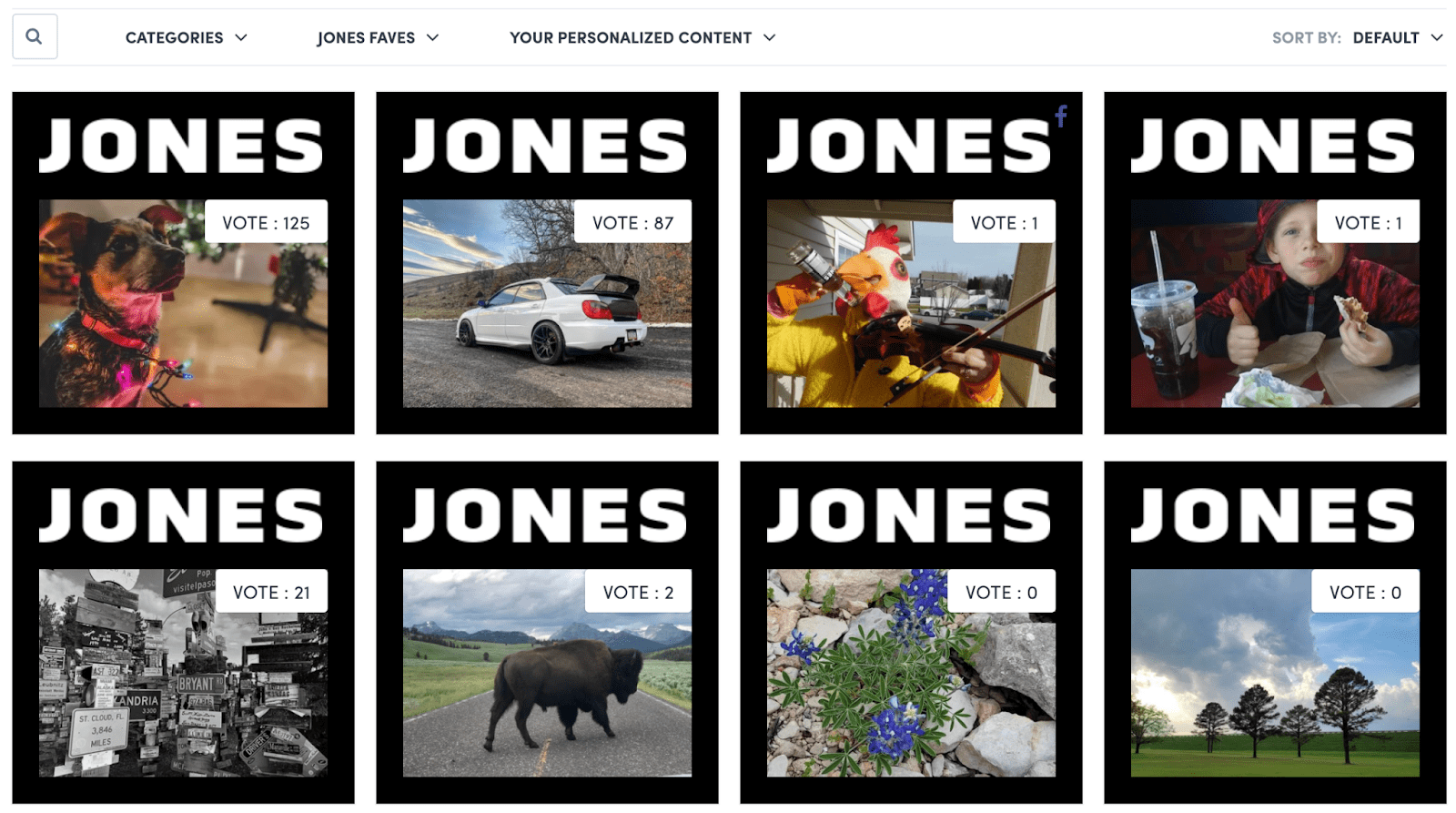
In 2021, Jones Soda expanded this concept with the “Reels Label” campaign, leveraging Instagram Reels and augmented reality (AR) technology. Customers could share their reels for a chance to not only be featured on the bottles but also to be viewed in AR through the Jones Soda app, adding a high-tech twist to their customer engagement.
9. Northumbria University
Northumbria University in England adopts User Generated Content (UGC) to showcase the vibrant life on campus. The university encourages the sharing of experiences through the #IAmNorthumbria community gallery, which paints a picture of university life via photos from students and faculty.
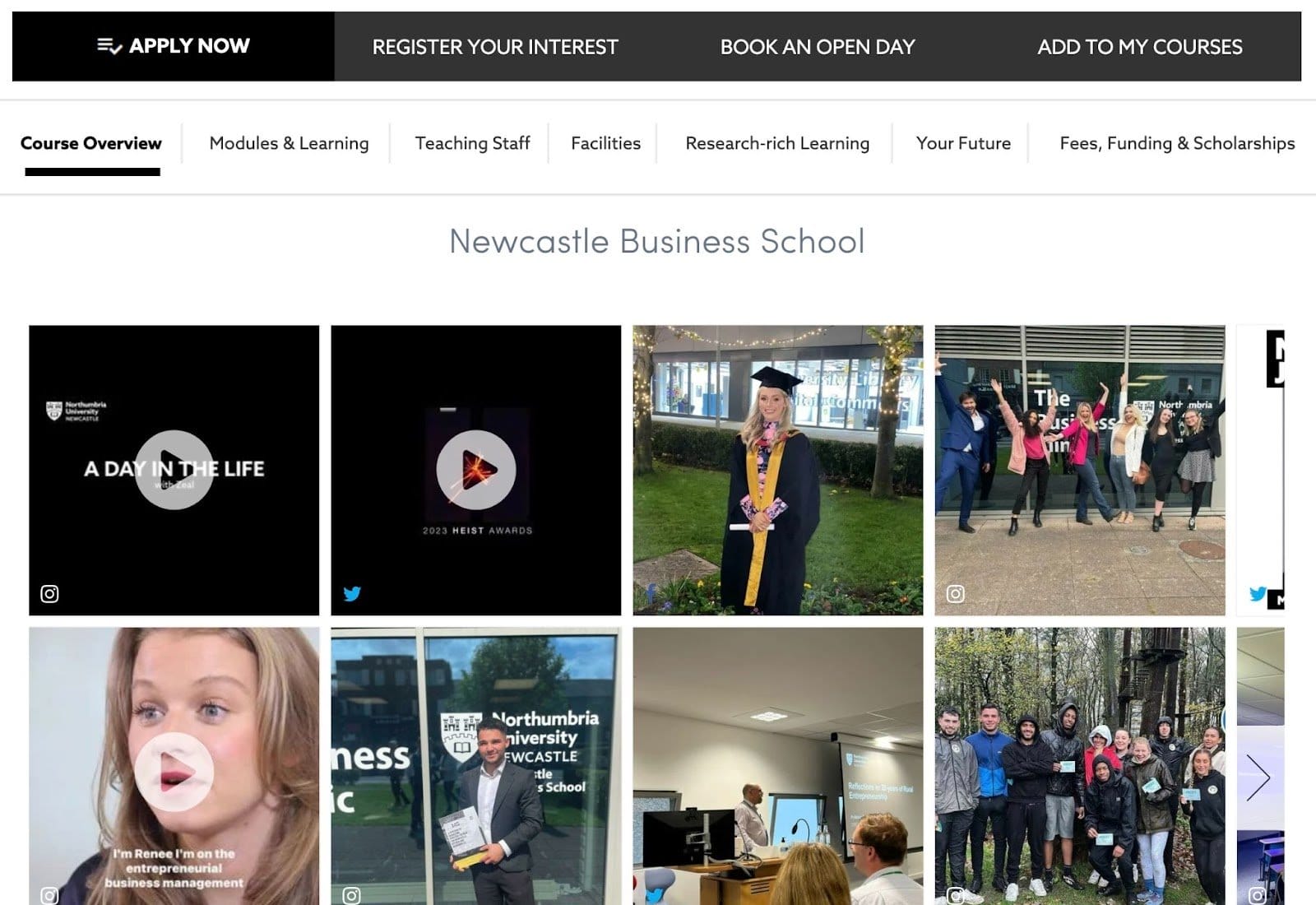 Furthermore, the Newcastle Business School at Northumbria University takes it a step further by featuring UGC on course and master’s program pages, providing prospective students with a genuine glimpse into the student experience. These initiatives not only foster a sense of community but also serve as a powerful tool for prospective students to visualize their potential experience at the university.
Furthermore, the Newcastle Business School at Northumbria University takes it a step further by featuring UGC on course and master’s program pages, providing prospective students with a genuine glimpse into the student experience. These initiatives not only foster a sense of community but also serve as a powerful tool for prospective students to visualize their potential experience at the university.
10. NAVY Hair Care
NAVY Hair Care, a brand established with social-forward values, exemplifies effective use of User Generated Content (UGC). By integrating visual UGC with detailed customer ratings and reviews across their social media and website, NAVY has significantly boosted its repeat-visit rate and overall website engagement by 264%. This approach provides potent social proof, allowing customers to see and read about real experiences with NAVY products, which enhances trust and transparency for the brand.
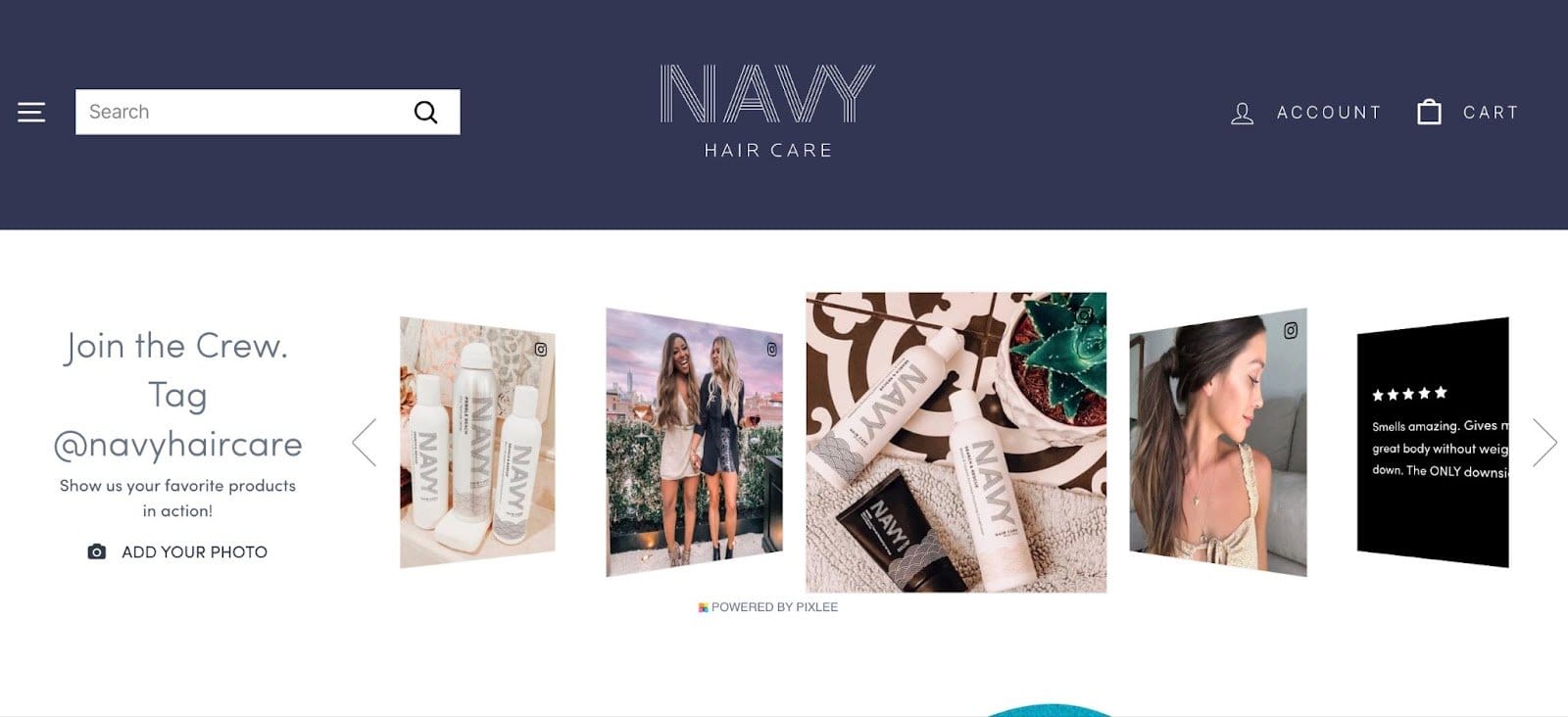
How to Run Your Own User-Generated Content Campaign.
Running your own user-generated content (UGC) campaign can be a powerful way to engage your audience and create a wealth of authentic content that promotes your brand. Here’s how you can do it:
1. Define Your Goals and Metrics:
Before launching a UGC campaign, you need to have clear objectives. Are you aiming to increase brand awareness, drive sales, or gather customer feedback? Once your goals are set, decide how you will measure success. This could be through the number of submissions, engagement rates, or the use of a campaign-specific hashtag.
2. Know Your Audience:
Understanding who your audience is and what motivates them is crucial. This knowledge will guide the type of content you ask for and the platforms you use. For instance, younger audiences may be more active on TikTok or Instagram, while professional content may fare better on LinkedIn.
3. Choose the Right Platform:
Select platforms where your audience is most active and where content can be easily shared and seen. Each platform has its nuances, so tailor your campaign to fit the medium, whether it’s Instagram, Twitter, TikTok, Facebook, or something else.
4. Create Clear Guidelines:
Set clear and simple guidelines for what kind of content you want. Be explicit about the formats (images, videos, text), themes, and any branding elements you’d like included. This ensures the content created aligns with your brand’s image and campaign goals.
5. Offer Incentives:
Incentives can significantly boost participation. This could be a contest with a prize, a feature on your official channels, or a discount on future purchases. Make sure the reward is relevant and valuable to your audience.
6. Promote Your Campaign:
No campaign can succeed without promotion. Use your owned media channels, influencers, and even paid ads to get the word out. Make it easy for users to understand how to participate and what they can gain from it.
7. Monitor and Support:
Once your campaign is live, monitor it closely. Be prepared to interact with participants, offer support, and maintain the campaign’s momentum. It’s also important to moderate submissions to ensure they meet your guidelines.
8. Leverage the Content:
As submissions come in, share and highlight standout contributions across your channels. This not only rewards participants but also shows the ongoing success of the campaign, encouraging others to join in.
9. Analyze and Adapt:
After the campaign, analyze the results against your initial goals. What worked well, and what didn’t? Use these insights to refine future campaigns.
10. Show Appreciation:
Always thank your participants. A simple acknowledgment can go a long way in building a loyal community that feels valued and is more likely to engage with future campaigns.
Running a UGC campaign is a cycle of planning, executing, and refining. It requires understanding your audience, clear communication, and a willingness to adapt. With the right strategy, UGC campaigns can yield significant benefits, from increased engagement to a stronger brand presence.
Can You Create a Wikipedia Page for Your Company?
How to Write a LinkedIn Recommendation in 2023
How to Create a Landing Page: The Ultimate Guide
How to Get a Google Ads Certification
How to Start a Podcast on Spotify for Free


